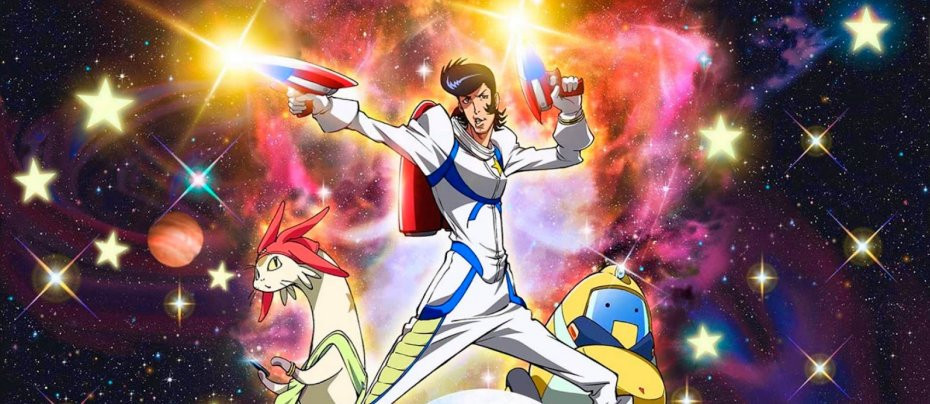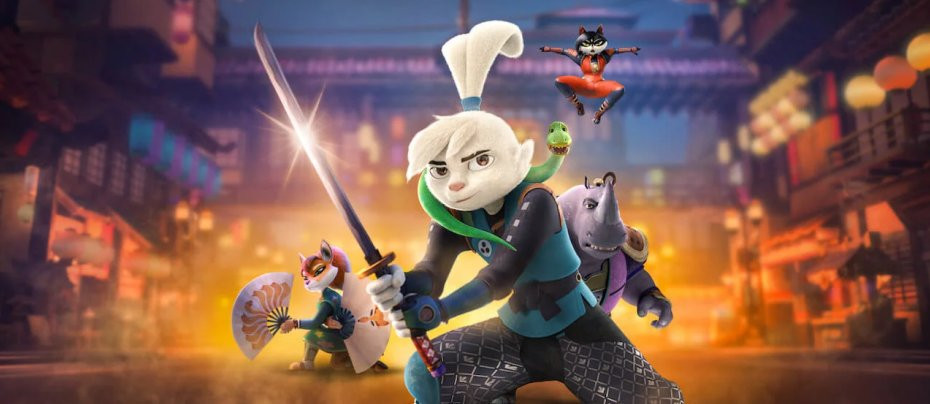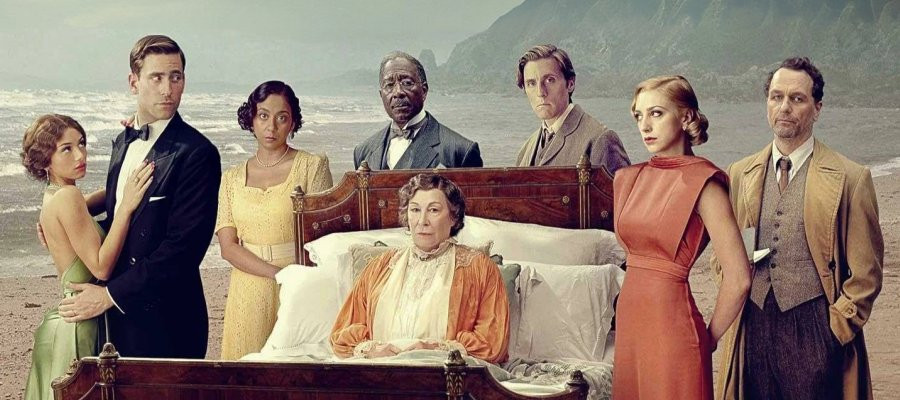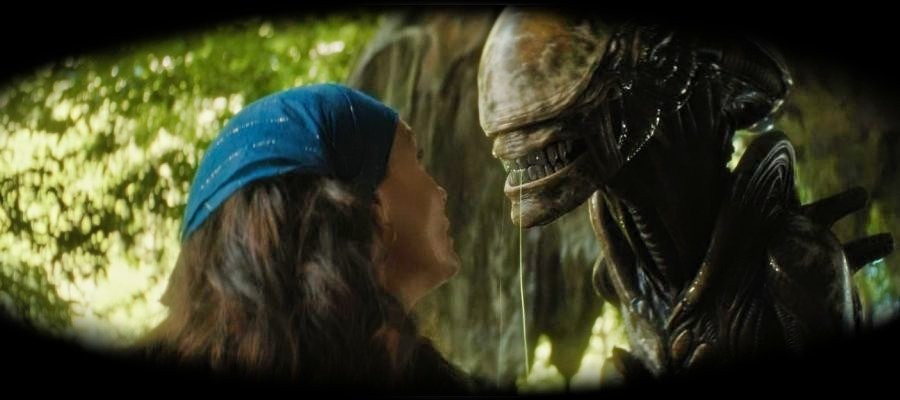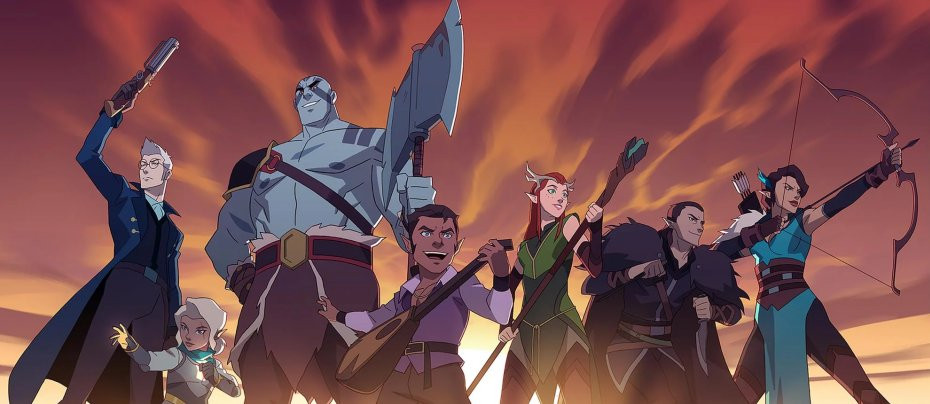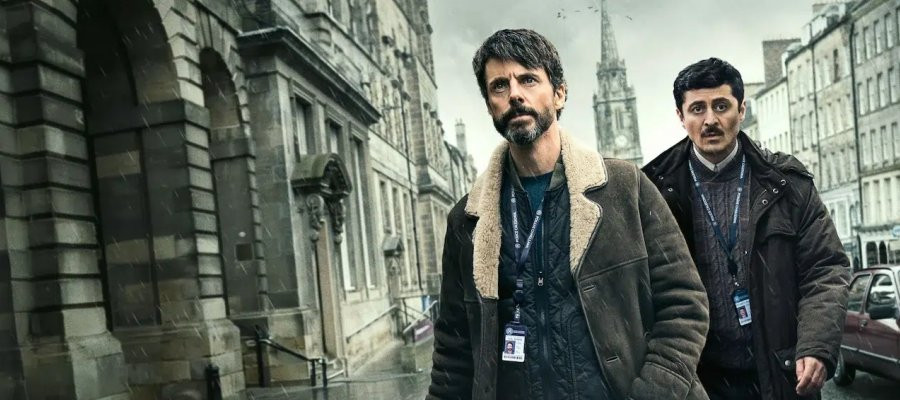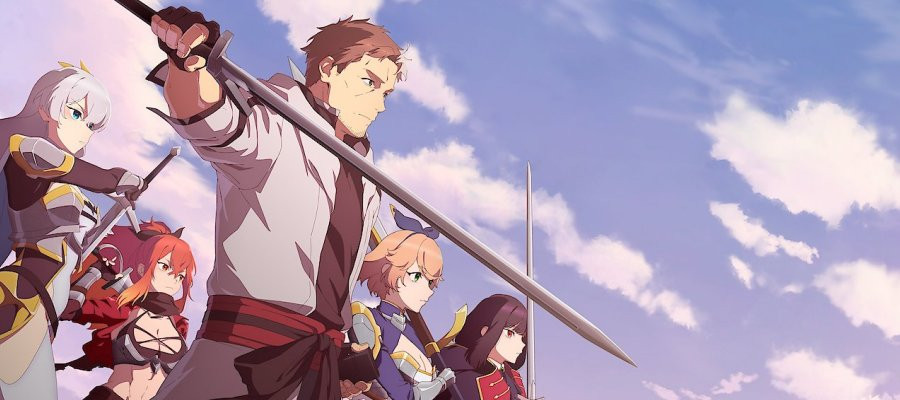
Old Country Bumpkin to Master Swordsman
2025 - JapanIf you think the title of From Old Country Bumpkin to Master Swordsman is a bit of a mouthful, consider this: like many Japanese 'anime' cartoon shows, it is based on a 'manga' comic series, which is based in turn on a series of "light novels," which add the subtitle My Hotshot Disciples Are All Grown Up Now and They Won't Me Alone. Perhaps that loses something in the translation but it sums up the premise pretty well.
Beryl Gardinant teaches swordsmanship in his father's dojo in a backwater provincial village. When he was young he aspired to be a professional Adventurer, but, now in his mid-forties, life has rather passed him by. He is conscientious and highly skilled, and he has a genuinely unselfish care for his students. As a result of his care and expertise several of them have gone on to high flying careers far more successful than his. A strangely high proportion of these happen to be attractive young women.
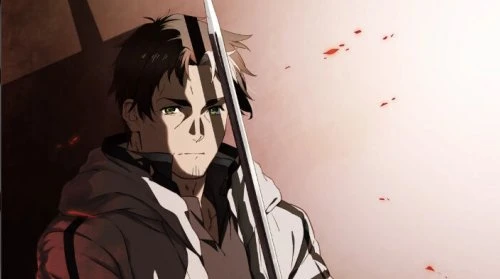
They feel intense gratitude to him, and in a couple of cases it may be more than just gratitude. They all believe he deserves greater recognition, which will also reflect credit on them, but his natural humility is such that he needs to be forced out of his comfort zone. This is very much a middle age wish fulfilment fantasy and one cannot help wondering if the original novelist, Shigeru Sagazaki, happens to be a teacher: the internet is silent on that point. Yet the 'anime' is lifted from the norm by its clever characterisation and by the quality of its animation.
Beryl is an extremely sympathetic protagonist. We are given access to his inner monologue, so we know that his insecurities, his humility, and his unselfish care for others are unfeigned. We share his fear in tense situations, both when he is in physical danger and, more difficult for him, when he is socially uncertain, and we are with him as he works out solutions to his various problems calmly and methodically even under extreme stress. We see how instinctively he puts others before himself: when he duels former students he is thinking more about what it will mean for their development than about his own reputation. He is the perfect teacher and, although he would never think of himself this way, leader.
He is drawn as handsome (of course: no wants an ugly protagonist) but is far from the usual 'anime' pretty boy type hero. He is manly in every sense. Age has given him a rugged bearlike quality that suggests reliability. His eyes are sharp but gentle. His movements are relaxed, a man at ease with who he is, in contrast with the fast moving youngsters around him.
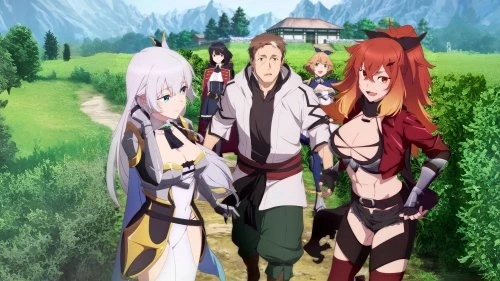
These include four of his female past students who form the heart of his unofficial fan club: Allucia Citrus, the serious minded young Commander of the Liberion Order, a sort of chivalric police force; Surena Lysandra, a buxom, rather underdressed "black rank Adventurer,' who is often viewed from a low angle for some reason; Curuni Crueciel, a sweet natured trainee in the Liberion Order; and Curuni's friend Ficelle Harbeller, who has put her fencing skills to a different use by becoming a specialist in "sword magic" in the official "Magic Corps" (this being a Japanese story, everything is ranked and organised, even magic and adventuring). Later he encounters another admiring female past student, Rose Marbleheart, who has been promoted rapidly to Vice Commander of the Holy Order of a neighbouring Kingdom (hmm, could that surname be hinting at something?). At the same time he makes new female friends: he impresses the powerful Commander of the "Magic Corps," Lucy Diamond, who is all the more sinister for assuming the appearance of a young girl despite being much older than she looks (no one is certain how much older); and he establishes a touching father-daughter relationship with an actual young girl - well, more a surly teenager - Mewi Freya, a reformed pickpocket. All are drawn in the traditional 'anime' style for women, girls, and the slightly uncomfortable border zone in between, so there is an element of homogeneity about the seven, but all are given distinctive and very striking eye colours so that it is easier to tell them apart.
Beryl does have some friends who are not pretty young women. These include another past pupil, Balder Gasp, who studied fencing as an adult learner in order to give himself greater understanding in his day job as a swordsmith, and Henbritz Drought, the initially antagonistic Vice Commander of the Liberion Order. His parents and yet another past student, a retired "gold rank Adventurer," Randrid Pattlerock, who takes over his teaching work in his absence, are also in on the friendly plot to push Beryl out into the world so that he can become the man he is meant to be.
The animation, especially the sumptuous backgrounds, are, like most top 'anime' these days, influenced heavily by Hayao Miyazaki and Studio Ghibli. While the rural scenes are more Japanese in style, the urban architecture is Central European, wandering between the 15th and 18th Centuries. The technology appears to be pre-Industrial and pre-gunpowder. As is often the case in 'anime,' most of the principal characters look more European than Japanese.
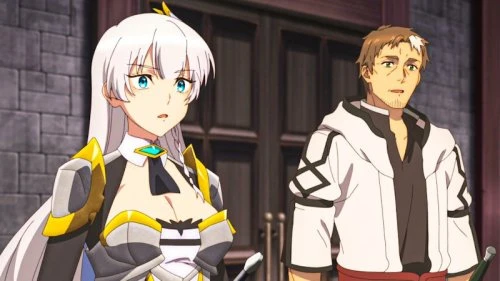
It has to be said that there are nevertheless some distinctively Japanese cultural attitudes on display here that may detract a bit from a Western viewer's enjoyment. The "sexy schoolgirl" aesthetic popular in Japan does not travel well, and even where a couple of Beryl's early pupils have grown up into fully mature women, there is something off-putting in the mere suggestion of the possibility of a romantic relationship with a much younger woman with whom he had a distinctly paternal relationship when she was a little girl ten or twenty years before. An uncaring attitude to animals, even mythical ones, is another point of discomfort: your reviewer was rather disappointed by what happened to a magnificent griffin. Above all there is a vicious Anti-Catholicism combined, as is usually the case, with an obvious ignorance of what Catholicism is: it seems like someone from a completely different culture has watched something like Castlevania and come to the conclusion that is what Catholicism must be. As a Protestant, your reviewer has no dog in this fight but it should be noted that what is portrayed, even as an analogue, is inaccurate and misleading, as it was in Castlevania, and therefore adds to the sum total of ignorance and prejudice in the world.
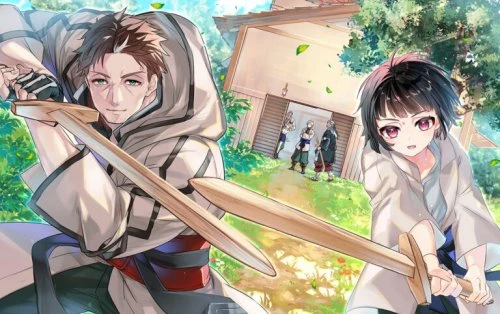
These reservations hold From Old Country Bumpkin to Master Swordsman back from true greatness, which is doubly a pity because it comes close in some respects. Some of the fight choreography in particular is of a much higher standard than we have seen in most live action features lately, never mind animation. While there are still a lot of sequences when people just leap about in defiance of the laws of physics, there are at least some fights, especially the duels viewed from Beryl's perspective, that are astonishingly authentic - apart from the fact that Beryl is far too tolerant of lateral swings in this reviewer's opinion. It is interesting that the weapons, and therefore the fighting styles, reference HEMA (Historical European Martial Arts) rather than kendo and Japan's own famous martial arts. Apparently the Japanese HEMA club Castle Tintagel advised the production and the animators really appear to have paid attention to what they advised. Certainly HEMA types have been geeking out all over the internet about the show (do not ask how your reviewer knows this).
Yet the best scene is when we see Beryl simply standing, calmly immobile in the ready stance, from the point of view of a student who is supposed to attack him, and we realise, as the student does, that there is simply no line of attack which is likely to succeed. It is a beautiful example of "Show, Don't Tell" and does more to establish who Beryl is than all the unsolicited boasting of his students on his behalf. This is the patient man of whose anger Virgil said one should beware. Here, in a rather silly 'anime,' is one of the best portraits of healthy masculinity since Viggo Mortensen's Aragorn in the cinematic Lord of the Rings trilogy, and he deserves to be better known as a role model for boys and young men.
Seen this show? How do you rate it?
Seen this show? How do you rate it?
Published on August 21st, 2025. Written by John Winterson Richards for Television Heaven.


